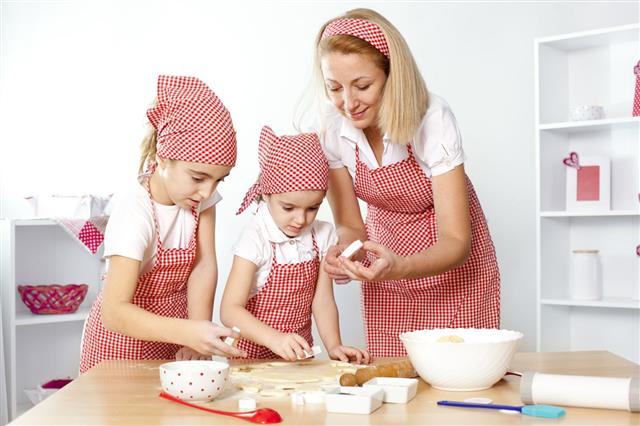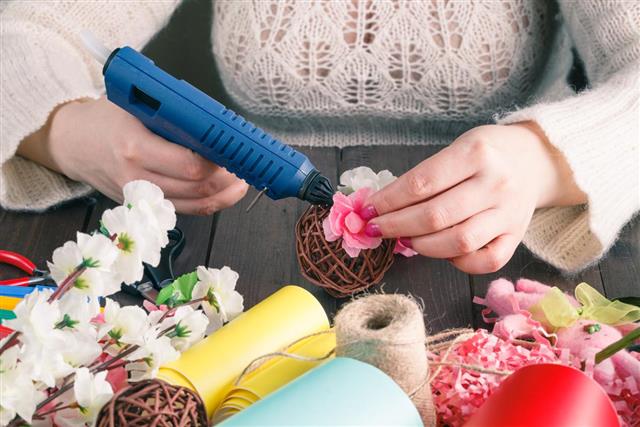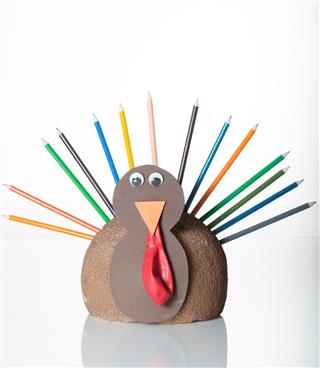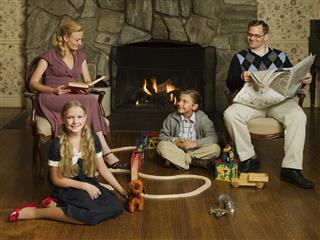
Team building games develop communication, coordination, cooperation, and team spirit amongst people. However, not always do we have the privilege of the ‘spacious outdoors’. Weather, place and time restraints do not permit outdoor team building activities. Indoor games are the only option then. Let’s have a look at some interesting corporate indoor games that can be played within the four walls of the office or hall.
Indoor games for team building are gaining popularity and are being adopted at schools, colleges, workplaces, camps, etc. Indoor group games prove to be beneficial in breaking the ice, spearheading communication, building relationships, and also enhancing creativity. Such activities help people interact and gel with one another and work in coordination to achieve a common goal. A specific event or day or place, is not required to conduct team building games. With indoor team building games, you can carry out team building activities in just a small room.
Games always bring out the creative side of people and boost their confidence. It also gives people a break from the humdrum of life. People who participate in several game activities are seen to accept challenges more readily. Thus, games not only improve creativity, but also enhance the overall development of a person. Here, we give you some games that you can play at work or during studies to build a sense of camaraderie among colleagues and classmates. These games are sure to entertain and motivate.
Requirements
Balls of wool (4 different colors), pack of UNO cards, pair of scissors and a table.
Prior Preparation
Take the 4 balls of wool (red, yellow, blue, and green color) and cut them into pieces of different sizes; some large and some small pieces and mix them together. Place this mixed mass of colored wool onto a table in the center of the room.
Sorting the Teams
Since UNO cards are also of the colors: red, yellow, blue, and green, they are very helpful for sorting. Take equal number of colored cards and ask the players to pick one UNO card each. They cannot show their card to anyone and are also not allowed to talk. Without talking and without showing their card, they have to sort themselves. All the yellows in one team, greens in one team and so on. They can point out to colors in the room, indicating the color of their card, etc. but no talking and no showing the card. This ensures silent and fun sorting. Now you have four teams. Allot four corners of the room to each team, and ask each team to pick their own team leader.
How to Play
Place the heap of entangled pieces, of the four colors of wool, on a table in the center of the room. Each team has to pick up wool pieces corresponding to their team color; red, yellow, blue or green. Some members of the team will run to the center table and collect wool pieces, while the others will stay at the corners ready to tie the wool pieces together. The rule to be remembered is that only one piece of wool can be carried to the corner at a time, and only after the person (who is tying) has tied the piece, can the runner go back for the next one. Make sure this rule is followed. The teams are to join the ends of the wool pieces to make a long thread. At the end only one long thread is expected, no two sets of the same color are allowed. Give the teams exactly 7 minutes to play. Once the seven minutes are up, compare the four threads. The team with the longest thread wins. However, while cutting the wool make sure you cut small pieces of wool strands, because if you cut bigger pieces, the final line will be very long for you to measure.
Learning
It’s a very simple game, however, don’t get fooled by its simplicity. Lots of aspects like coordination, time management, leadership roles, communication, working in a team, etc. evolve through this activity. Since the pieces are cut into different sizes, the players running to bring the pieces have to choose the longer ones from the wool heap. The people tying have to be quick and have to work in coordination with the others. Since only one long thread is allowed, it’s necessary for the team to stay together. Final win belongs to the team and not individuals.
Requirements
Newspapers (lots), easy tear tape, one jug.
Sorting the Teams
To get the group sorted, you can use the animal sound game. On chits of paper write: duck, dog, cat, and cow. Equal number of the four animal chits must be present. Ask each person to come and collect one chit each and not show anybody their chit. The ducks, dogs, cows and cats are to form their groups by making the respective animal sounds. So the room’s going to be filled with quacks, bow wows, moos and meows. At the end you will have four groups.
How to Play
To each team, provide equal amounts of newspaper and sticking tape. Give them 30 minutes to build a bridge, which can withstand the weight of a water jug. The rule to be remembered is that the bridge should have only two pillars to support itself. At the end of the building time, the team which builds the strongest bridge, sustaining the weight of the water jug is the winner.
Learning
This indoor team game deals more with strategic management and optimum utilization of resources. Each team has to conduct a brainstorming session among themselves, so as to come up with the best technique, to build the strongest bridge.
Requirements
Straw (lots) and sticking tape.
Sorting the Teams
Write down the names of famous nursery rhymes on chits of paper: Baa Baa Black Sheep, Twinkle Twinkle Little Star, Humpty Dumpty and Jack and Jill. Once each person gets a chit, they are to sing the lines of their respective nursery rhyme and get sorted. The four teams are ready to play.
How to Play
Provide each team with the same quantity of straw and sticking tape. The teams are to build the tallest tower using straw and tape to win the game. The rule to be remembered is that, no objects are to be used to support the straw tower. The tower strictly has to be in a vertical position to qualify. No horizontal towers allowed. The towers must stand and if it falls, the team gets disqualified.
Learning
Like the paper bridge activity, this activity is also based on developing the best strategy, which would ensure the firm standing of the straw tower. Team work, coordination, listening, and guiding abilities also come into the picture.
Requirements
Various types of vegetables (tomatoes, onions, scallions, peppers, cucumber, beetroot, cilantro, corn, chillies, carrots, etc.), knives, trays, plates, chopping boards, toothpicks, work tables – 4 (with enough working space), waste baskets, hand towels or paper napkins, aprons (if possible).
Sorting the teams
On chits of paper, write down names of articles belonging to a particular category, such as utensils: knives, spoons, forks, ladles, pots, pans, etc. Vegetables: carrots, tomatoes, cucumber, chillies, etc. Spices: cloves, coriander seeds, cumin seeds, basil, etc. and under fruits: apple, mango, banana, grapes, etc. Don’t tell the players the categories. Here, they are allowed to show their chits to each other. They have to find out on what basis they are all categorized and find their groups. You will have the teams sorted out and ready to play.
How to Play
Provide each team with one work table. On the work table, place equal amounts of the same assortment of vegetables, knives, spoons, trays, chopping boards, toothpicks, etc. Each team has to use its creativity and come up with some salad creation. The judging parameters of the final creation would be based on the creative talent, presentation skill, cleanliness, and optimum utilization of the given resources. Give the teams an hour for this activity.
Learning
The participants will have to chalk out an initial plan of action. This involves brainstorming and team consensus of the plan. Delegation of authority and responsibilities also come into play because each person will have to play a role in the salad project. The participants will work individually for a common goal. This activity also focuses on creativity and optimum utilization of given resources (most of the given vegetables should be used). The lesser the wastage, the higher the marks. Since the teams are competing with teams who have same resources, they have to aim to come up with something better than the others.
Requirements
Paper sheets, one camera (digital or cell phone) for each team.
Sorting the teams
Take calendar pages and tear off the portion with the dates. You only need the picture. Now cut the picture into 6-7 pieces (make sure the pieces are not too small). Do the same for 4-5 other calendar pictures depending on the number of teams you plan to have. Mix the pieces of the calendar pictures together. Place it in a box and ask the participants to pick up one each. Now, the game is to finish the puzzle. People who are part of the same picture are to find each other. You will have the teams sorted out. However, don’t divide the picture into more than 6 pieces, or else the assembling becomes complicated.
Prior Preparation
Write down the feats, which the teams are expected to achieve on pieces of paper. All four teams are to receive the same set of feats to accomplish. Examples of feats are:
- Click a picture consisting of ten different pairs of footwear
- Click a picture of two bald men
- Click a picture of 8 people drinking water at the same time
- Click a picture of five men seated on chairs
- Click a picture of two hands painted with red nail polish
- Click a picture of a black handbag with a white scarf coming out of it
- Click a picture of 11 hands placed one above the other
- Click a picture of three women in white clothes, etc.
You can alter the feats as per your liking and the available resources. Keep some easy, moderate and difficult feats.
How to Play
Give the participants one hour to accomplish the tasks. The time of the activity can be altered as per the level of difficulty. The teams are required to click pictures of the asked items, in the way mentioned on the paper. The one who submits all the pictures in the shortest possible time is the winner.
Learning
This activity involves team work, coordination, communication, and delegation of work. The teams must allot feats to team members and must find quicker and intelligent ways to accomplish the feat before the other teams. Marketing and convincing skills also come into play because the participants will have to convince people to lend them their belongings, to take the necessary pictures.
Requirements
For the sorting you will need shredded chicken, shredded cabbage, mayonnaise, sliced olives, bread, slices of cheese, slices of tomato, slices of cucumber, diced apple, strawberries, papaya, fresh cream, hot dog, hot dog bun, mustard, ketchup. For the clay play activity, you need different colors of modeling clay, modeling clay tools, plastic sheets, rag and trays.
Sorting the teams
This is a different style of sorting activity and requires more effort on the prior preparation part, however, it gets the participants warmed up for the creative game ahead. For the sorting, place all the edible ingredients (in bowls), on a table. Place the table behind a screen. Ask each participant to come and pick up one item. Then they are to go back to their place and hold the item behind them, such that the others cannot see. Once every participant has got his or her ingredient, ask all of them to hold the ingredients such that all can see. Now tell them they have to prepare a dish by simply assembling four right ingredients. Not more than four ingredients in each dish is allowed. Thus, people having the three diced fruits will come together along with the person with cream and prepare fruit salad. The ones with shredded chicken, shredded cabbage, mayonnaise and sliced olives will come together, mix it in a bowl to prepare a chicken salad. The ones with bread, slice of cheese, slice of tomato and slice of cucumber can come together to form a sandwich. Ones with the hot dog bun, hot dog, mustard sauce and ketchup can come together and quickly prepare the hot dog. Thus, you have sorted four teams in a fun and creative manner.
Prior Preparation
Now for this indoor team building game, take four paper chits and write down four things that the teams can make from modeling clay. For example, you can give simple themes like flowers, hats, fruits, jewelry, pots, donuts or slightly complex ones like dinner set, McDonalds, different types of ice creams, wedding cakes, etc. McDonalds may seem confusing, however, it’s very interesting. The teams can make burgers, fries in small cartons, as served at McDonalds, milkshake, etc. all from clay. Dinner set is also easy. Just model a few plates, bowls, spoons, teapot, cups, etc. Ice creams can be of different colors indicating different flavors, with sprinkles, chocolate chips, fruits, etc. Those who watch ‘Ultimate Cake Off’, modeling a wedding cake is no big deal!
How to Play
The team that came together first has the privilege to pick up the first chit from the bag. Once all the teams pick up their chits, give each team a large modeling clay set with the tools. Also give each team a plastic sheet, a rag and a tray to place the finished product on. If you really want to be liberal, you can also allow your participants to use the Internet for assistance. However, it’s best to let the participants rack their brains and come up with their own ideas. You will be amazed at what can be done with a small ball of clay.
Learning
This activity talks about how we can create something really fantastic, from something very simple. It’s all about using our creativity and instincts. It also shows us that even though at first we thought nothing much would come out of simple clay, the end results prove otherwise. The game also involves team work and coordination. Thus, we are to always remember, we can together create masterpieces and perform wondrous tasks by unifying our talents and efforts!
Requirements
Sheets of A-4 size paper, black marker, sticking tape, assorted winter wear, and assorted monsoon wear. Scoreboard and bell, to indicate time up!
Sorting the teams
In this game, we only have to sort the participants into two teams. So for this activity, we will use the category sorting. Get woolen sweaters, mufflers, mittens, earmuffs, woolen caps and any other kind of winter wear you can get hold of. Do the same for monsoon wear. Get windcheaters, gumboots, raincoats, etc. and place all winter and monsoon wear together in a large box. Ask each participant to come behind a screen and pick up one item. Once every participant has got one item, ask them to figure out the categories and sort themselves according to it.
Prior Preparation
Write down names of famous personalities in capital letters on each sheet. You can have any number of names, depending on the number of participants or time available.
How to Play
Let the two teams sit in parallel rows. Then ask one member from any team to come up. Stick one sheet of paper, with the name of the famous personality on the back of the participant. Then, ask the participant to face his back towards his team members. His team members can see the name of the personality. Now the game begins. Without giving out the name of the personality, the team members have to help their teammate guess the name of the personality, pasted onto his or her back. The participant can only ask his team questions, which they will respond in ‘yes’ or ‘no’. They cannot answer in any other way, else they get disqualified. The questions that can be asked are as follows:
- Is the personality a male? (If the team members say ‘no’, the participant will know the personality is a female)
- Is she an actor?
- Is she a sports person?
- Is she alive?
There are two ways to play this game. Either you can place a questions limit or a time limit, depending on your liking. Questions bar involves placing a limit on the number of questions, such as twenty, which the participant can ask. If the participant doesn’t guess the personality within those twenty questions, the team fails to gain a point. In the other case, the participant is given exactly 3 minutes (adjust the time accordingly) to guess the name of the personality. In these 3 minutes he or she can ask as many questions. If he or she guesses the right answer, the team gets a point and a participant from the next team, is invited to follow the same format.
Learning
There is a lot of profound truth one can learn from this activity. This game shows us how members of the team have to support each other. If the team gives up on a member, the entire team suffers. Moreover, if a team member fails to rely on his team members and find the solution on his own, there are very slim chances he will succeed.
Requirements
Sheets of A-4 size paper, glue, alphabet cereal (3-4 boxes), scoreboard and bell, to indicate time up!
Sorting the Teams
Take cartons of Quaker oats, Kellogg’s cornflakes, and Muesli cereal, and cut them into four pieces each. Place all the pieces in a bag and ask all members to take one. They need to find their own teams by matching the pieces of the cartons. It’s better to have four pieces, because more the number of pieces, more will be the complexity. If you want more members in a team, instead of cereal boxes, you can also take calendar pictures and divide them accordingly.
Prior Preparation
Empty the alphabet cereal on a tray and sort out the alphabets in such a way that you have the consonants and vowels segregated and placed in separate bags.
How to Play
Ask each participant to come forward and take two alphabets from the consonant bag and one alphabet from the vowel bag. So, suppose there are four members in a team, the team will have a total of 8 consonants and 4 vowels with them. Give each team 30 seconds to come up with the longest word possible, with the cereal alphabets they have. Within those 30 seconds they also have to paste those alphabets onto the sheet of paper. When the bell goes, each team is to lift up their sheet of paper and show the word they have made. The team with the longest word wins! Play as many rounds as you want and keep a tab on the scores. The team with the most number of longest words wins the game!
Learning
Although the game is a different version of scrabble, it involves a lot of team work and co-operation. Participants will enjoy their time trying to rack their brains for the sake of their team’s success. Participants also learn to listen to their team members and try to attain a common goal!
These indoor team building games can be altered as per your group size and time available. Explain the rules and the game clearly in the beginning and don’t forget to keep a watch on those breaking the rules. Keep encouraging all the participants during the game and also intimate them periodically on the amount of time left for the timer to go off. If you wish, you could award the winning team with a special prize, especially in case of the salad dressing activity and snap hunt. Games involving longer duration require a lot of planning and hard work. So awarding the participants for their efforts is most appropriate.






















